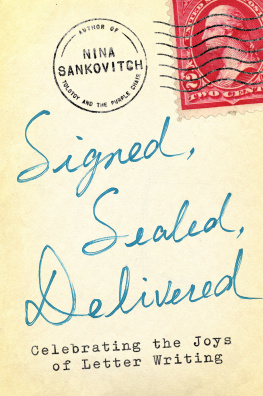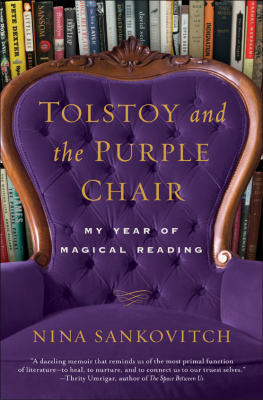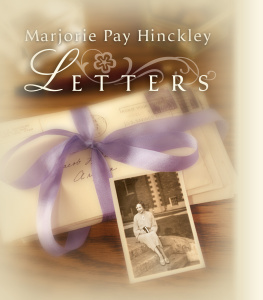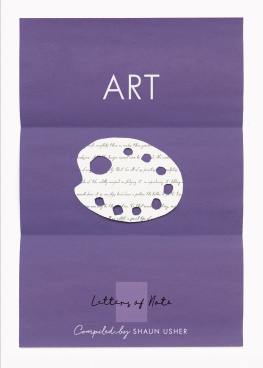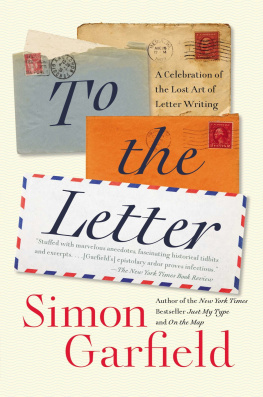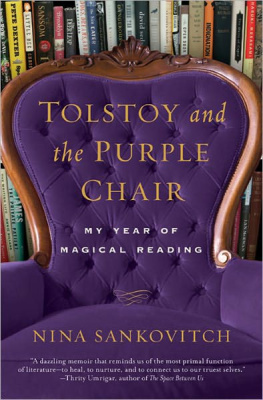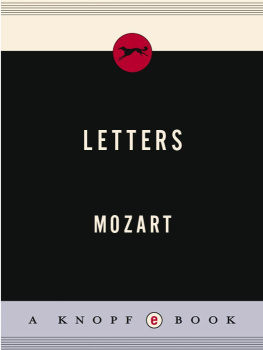Also by Nina Sankovitch
Tolstoy and the Purple Chair


Simon & Schuster
1230 Avenue of the Americas
New York, NY 10020
www.SimonandSchuster.com
Copyright 2014 by Nina Sankovitch
All rights reserved, including the right to reproduce this book or portions thereof in any form whatsoever. For information address Simon & Schuster Subsidiary Rights Department, 1230 Avenue of the Americas, New York, NY 10020.
First Simon & Schuster hardcover edition April 2014
SIMON & SCHUSTER and colophon are registered trademarks of
Simon & Schuster, Inc.
For information about special discounts for bulk purchases, please contact Simon & Schuster Special Sales at 1-866-506-1949 or business@simonandschuster.com.
The Simon & Schuster Speakers Bureau can bring authors to your live event. For more information or to book an event contact the Simon & Schuster Speakers Bureau at 1-866-248-3049 or visit our website at www.simonspeakers.com.
Interior design by Aline C. Pace
Jacket design by Melissa Chang
Library of Congress Control Number: 2013023240
ISBN 978-1-4516-8715-6
ISBN 978-1-4516-8717-0 (ebook)
In memory of Robert F. Menz
Thou ugly, filthy, camels face, You chid me once for not writing to you; now I have my revenge, and more justly chide you, for not having heard from you for so long as I fear you have forgotten how to write.
Elizabeth, Queen of Bohemia,
in a letter to the Earl of Carlisle, 1630
Table of Contents
Prologue
Thank youthat is for being born and for the letters too.
Letter from Georgia OKeeffe to Alfred Stieglitz
W hen my oldest son was still an only child, my husband and I bought him his first chair and desk. The three of us had set out for the Chelsea flea market early one October morning. The market was known for its collection of used furniture, slightly bent lamps, and bizarre bric-a-brac. We had no clear goal in mind other than wandering through the outdoor aisles before the popular spot became too crowded for a large-wheeled stroller.
It was a day of big blue skies and fresh air after a night of cleansing rain. We had nothing more pressing to do than keep our thirteen-month-old son happy. Full of young-parent energy and caffeine, we walked the sixty blocks downtown. Jack and I took turns pushing the stroller while Peter entertained us with a constant barrage of songs and chatter.
I dont remember who first spotted the small desk and chair, perfectly matched in slivered oak and inlaid scarring, bearing witness to at least one generation of scribblers before us. But there was no question in any of our minds: Peter thumped the desk with his fist and the set was ours.
We shoved the stroller, desk, and chair into the back of a large yellow cab and went home to the Upper West Side. I cleared out a corner of the living room for Peters desk, just below a window and to the side of our nonworking but fine-looking fireplace. From our small kitchen alcove I would be able to keep an eye on the desk, and when I sat to read on the couch facing the fireplace, Peter would be there beside me, working away while I turned pages.
I set up jars of markers and crayons along Peters desk, just where it met the brick wall. I laid out stacks of notebook paper, small index cards, and used envelopes, leaving the middle space of the desk open and clear. Above the jars I attached Peters favorite postcard to the rough bricks, a portrait of Shakespeare: the writer looks grim, his lips set in a downward line between goatee and mustache. Five ounces of blue sticky gum held the card straight. Everything was set and ready.
Peter toddled on sturdy legs over to his desk, pulled out his chair, and began to scribble. He quickly covered an index card with blue marker squiggles, then carefully worked the card into an envelope. His face serious, he turned and handed me the envelope. I had received my first letter from Peter.
Flash-forward seventeen years, and it is another beautiful fall morning. Peters old desk now sits in a sunroom off the main drag of the suburban home we moved to when our fourth child was born. Peter is away at college. We dropped him off there in August, moving him into his dorm on his eighteenth birthday. After getting him settled, we went out for lunch, to celebrate the birthday and the start of college.
After we eat, you guys should get going, Peter said to me as we sat down in the French restaurant a block away from Harvard Yard.
No problem. I nodded. I understood. He wasnt saying hit the road to me, not really. He was just saying that it was time for him to go his own way, and that family was not invited.
Within hours of leaving him on the steps of Memorial Hall, I got a text on my phone: Love you.
I showed it to Jack.
Nice, he said, and I agreed. Very nice.
But I wanted more. I wanted more than the texts and tweets and the occasional phone calls I got over the next few weeks. I wanted a letter.
Drop me a line sometime, goes the old farewell. A casual request, but for me a strong desire. With one child off at college, and three more to go, joining their brother in places near or far but not home with me, I wondered: Why does a letter mean so much?
Letters Found
Yet write, oh write me all, that I may join
Griefs to thy griefs, and echo sighs to thine.
Alexander Pope, Eloisa to Abelard
Y ears ago I found a trove of old letters. I found them in a broken-down steamer trunk buried under moldy blankets in a dilapidated shed attached to a decrepit row house. The house was on West Seventy-Eighth Street in New York City and wed just become its owner.
Jack and I had first heard about the old house for sale in our neighborhood two months earlier. On a cold November morning we took a walk over to look at it. The windows of the redbrick town house had a few cracked panes of glass and the bricks needed a good cleaning, but otherwise the place seemed solid. It was narrow, less than seventeen feet wide, but a whopping five stories tall. At the very top, a small, oblong window blinked under a sharply curving roofline. The house was charming and vaguely Amsterdamish in the pitch of its roof, the rhythm of its rows of windows, and the arch of its front door.
Suddenly the front door was flung open. A well-dressed woman came out, pulling an old chair behind her. We watched as she struggled with the chair, trying to prop the door wide open.
Jack hiked up the stairs to help the woman with the door. Mission accomplished, he introduced us as interested buyers. The woman hesitated for a moment.
The open house starts at one, she said, and I just came by to clean up what I can... but if youd like to come in, please do.
We followed her into a large hallway with stained but sturdy parquet floors and a winding staircase upholstered in worn red velvety carpeting. An octagonal lamp hung overhead, unlit.
I thought the electricity was on, but I guess not, the real estate broker said. Watch your step. She led us through the house, first going up the stairs to the very top floor. From there we saw that the house had only half a roof, the layers of old terra-cotta tiles broken and uneven, the plaster gone. Cold seeped in.
No real functioning heating system, we were told. The boiler hasnt worked in years.
It quickly became apparent that the plumbing also had failed in times long gone by. When Jack turned on the faucet in a bathroom painted lime green, the walls of the dark purple bedroom next door spouted minifountains of water. The pipes had been frozen and burst so many times, leaks ran in lines across the cracked walls.
Next page
